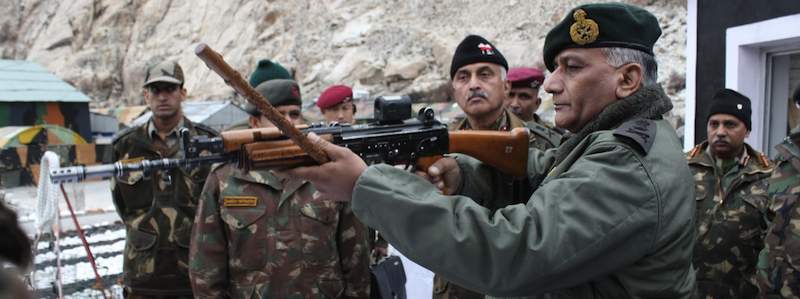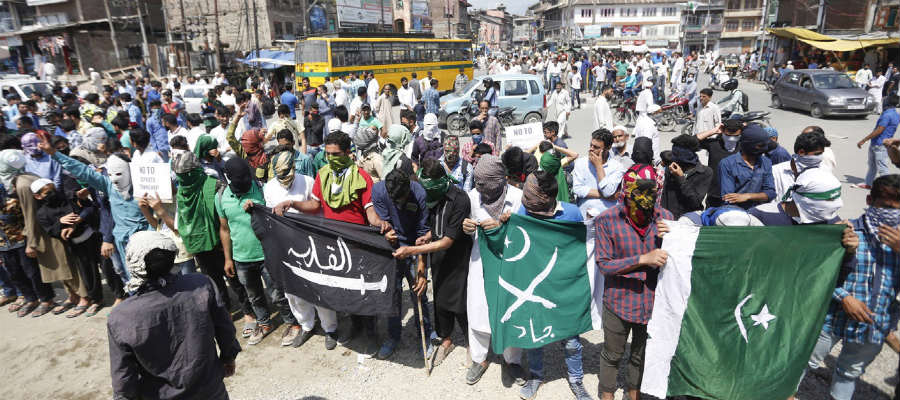BY MALOY KRISHNA DHAR
The post has been written in the wake of the latest spy scandal that erupted in the US and the subsequent spy swap between Russia and the US.
The recent spy swap between the USA and Russia is reminiscent of the Cold War era intensified espionage game played by the Soviet regime and the USA, Britain and their allies in the so-called Free World.
The FBI and CIA were aware of the existence of a substantial sleeper spy cell in the suburbs of New York, planted with meticulous planning by the Russian foreign intelligence agency, SVR (Sluzhba Vneshney Razvedki). Russian spies deported included:
- “Richard Murphy” and “Cynthia Murphy” admitted they were Russians Vladimir Guryev (44) and Lydia Guryev (39).
- “Donald Howard Heathfield” and “Tracey Lee Ann Foley” admitted they were Russians Andrei Bezrukov (49) and Elena Vavilova (47).
- “Michael Zottoli” and “Patricia Mills” admitted they were Russians Mikhail Kutsik (49) and Natalia Pereverzeva (36).
- “Juan Lazaro” admitted he was Russian Mikhail Vasenkov (66) – married to Vicky Pelaez (55), journalist born in Peru.
- Anna Chapman, 28 (maiden name Anya Kushchenko) – real estate entrepreneur, daughter of Russian diplomat Mikhail Semenko – apparently operated under own name.
- MISSING – 11th suspect known as “Christopher Metsos”, disappeared while on bail in Cyprus.
The Spies pardoned and deported to UK (2) and USA (2) are:
- Igor Sutyagin, nuclear scientist jailed in 2004 for spying for CIA.
- Sergei Skripal, ex-military intelligence (GRU), jailed for spying for UK in 2006.
- Alexander Zaporozhsky, ex-agent of foreign intelligence service (SVR), jailed for thirty years.
- Gennady Vasilenko, said to be former KGB agent, jailed in 2006 over illegal weapons, but actually for passing on secret intelligence to the West.
A White House official has revealed that the Obama administration was considering a spy swap well before the 10 were arrested on 27 June. White House officials were first briefed on the spy ring in February, while President Barrack Obama was made aware of the case on 11 June.
“The idea of a swap was discussed among the administration’s national security team before the arrests were made,” the source added. According to the White House, the US itself chose the names of the four men to be freed by Moscow. Its decision was based on “humanitarian concerns, health concerns, and other reasons”.
Peter Earnest, a former CIA officer, welcomed the release of the four. “This sends a powerful signal to people who co-operate with us that we will stay loyal to you,” he told the Associated Press news agency, “Even if you have been in jail for years, we will not forget you.”
Negotiating spy swap
The FBI was aware of the spy ring for nearly ten years. The agency followed their movements, mounted foot and mobile surveillance and monitored their phone calls. Leon Panetta, the CIA chief was kept informed. Taking into consideration the usual practice of the agencies neutralizing “sleeper spy ring” or Long Term Resident Agents (LTRA) at the earliest opportunity possible, it was expected that the Russian spy ring would be neutralized sooner than it was done.
According to reports, the president was told about the case on June 11, 16 days before the Russian agents were actually arrested. A swap emerged as an option that could resolve a potentially volatile situation without undercutting Mr. Obama’s effort to rebuild Russian-American relations. The Russian spy ring would be broken, the Americans would secure the release of four Russian prisoners and both sides could then put the episode behind them. The arrest was also delayed because the Russian President Dmitry Medvedev’s State visit to Washington on June 24.
President Obama’s national security team spent weeks before the arrest of Russian spies preparing for their take down and assembling a list of prisoners Moscow might be willing to trade for the agents, senior administration officials said Friday.
U.S. officials began negotiating with their Russian counterparts shortly after the spies were arrested late last month. Before long, both sides had reached an agreement that included pledges that neither would engage in any further “retaliatory steps,” such as a diplomatic freeze or expulsions, and that neither would harass each others’ officials or citizens. Officials concentrated on what they described as the smooth integration of the administration’s law enforcement, intelligence and diplomatic teams in tracking the Russian agents and turning the situation into a national security victory rather than a source of political and public concern and potential criticism. The officials spoke on the condition of anonymity because, they said, the undertaking had been a group effort, authorized by the president.
Details of some of the Russian spies handed over to the West:
- For several years in the 1990s, Mr. Zaporozhsky, a colonel in Russian intelligence who became deputy chief of the American Department, was secretly working for the C.I.A., one of the highest-ranking American moles in history, Russian prosecutors say. After surprising his colleagues by retiring suddenly in 1997, he moved with his wife and three children to the United States and went into business. But in 2001, confident that his C.I.A. link was unsuspected, Mr. Zaporozhsky was lured back to Moscow by his former colleagues for what they promised would be a festive K.G.B. anniversary party. He was arrested at the airport, convicted of espionage and sentenced to 18 years in prison. On Friday, Mr. Zaporozhsky was flown to Vienna and then to the Washington area for the 10-for-4 spy exchange that promises to bring to a swift conclusion the saga of the Russian spy ring exposed by the F.B.I. early last week.
- Another of the four, Sergei V. Skripal, seems to fit the classic cold war model, though without quite the roller-coaster intrigue of the Zaporozhsky case. A retired colonel in Russia’s military intelligence service, Mr. Skripal was convicted in 2006 of having passed classified information to British intelligence, MI6, for a decade, in return for $100,000 wired to a bank account in Spain.
But there is at least a little post-Communist ambiguity surrounding the two other men in the swap.
- Gennadi Vasilenko, a former K.G.B. major, was arrested in 1998 for contacts with a C.I.A officer but soon released, only to be arrested again in 2005 and imprisoned not for spying, but for illegal trafficking in weapons and explosives.
- And Igor V. Sutyagin, working at a Moscow thinktank, did contract research for a British company, which may or may not have been a front for Western intelligence. He has maintained his innocence, and human rights activists have defended him. But his swap prove that Sutyagin really worked for MI6 (Secret Service).
While the Russian media gave credible coverage to the spy swap some US commentators reacted severally. Simon Shuster of Time.com writes the US and Russia seem to have both avoided the topic of the 11th suspect: “Both sides also seem to have skirted the 11th alleged Russian spy named in the US indictment. He disappeared last week in Cyprus after authorities there granted him bail, and no public mention of his fate has been made amid the swap negotiations. On Thursday, Gennady Gudkov, deputy chairman of the Russian parliament’s security committee, said the most important part of the deal was damage control, not details.”
Espionage activities
Perhaps Russia avoided uncovering of its other intelligence operations by quickly agreeing to a swap. Chris Stirewalt at the Washington Examiner feels that USA might be getting the bad end of the deal with Russia: “We are sending them 10 Russians accused of living under false identities and actively trying to get information about American defense, industry and government. We are getting in return Russian citizens who were found – some a generation ago – to have had contact with the CIA or suspected CIA front organizations.”
Such criticism in a free democracy is inevitable. But the tradecraft that Russia had applied in putting in place a large number of Long Term Resident Agents is worth appreciation. One of the spies was the daughter of a former Russian diplomat, another one was an artist married to a Peruvian lady. They spoke US accented English, studied American mannerism and social habits and had developed ostensible means of income. Their neighbours never suspected them for espionage activities. Intelligence agencies take meticulous care in targeting, training, infiltrating and embedding agents.
Agents are of different categories. Agents are recruited after assessing the task in a target area, organizations, and countries. HUMINT (human agents) are recruited after in depth study of the person, his adaptability, suitability and capability. This part of the intelligence tradecraft is applied by case officers under guidance of his superior operations directorate. All aspects are analysed by the experts and than a decision is taken to recruit a human asset and convert him/her to an agent (Curious readers may like to read my book: Operation Triple X). An agent meant for locating in a foreign country has to undergo rigorous training. Take the cases of 10 Russian agents planted in the USA. They were given American names, were taught American social behavioral patterns, imparted training to speak in American accent and even adopt Catholic or Protestant religious rituals. Most Russians owe allegiance to Orthodox Church.
In case India intends to plant an agent in Pakistan the concerned agency is supposed to train him in similar fashion, make him a Muslim, teach all Islamic rituals, and teach Urdu and at least one dominant language (Punjabi).
In the current case the SVR had spotted, recruited and trained the assets with meticulous care. However, whatever little is known from FBI records, some of these agents had not observed the security lessons given to them by the SVR handlers. One lady agent had called her father, working in the FSB (internal intelligence) organization. Others also committed mistakes and behaved with laxity, which had drawn FBI attention. Thereafter the FBI had activated surveillance, conducted secret inquiry, monitored telephone lines and covered their several tradecraft modalities.
Agents cannot afford to be off guard. The counterintelligence agencies are not always five steps ahead of the LTRA. But once these LTRA assets commit tradecraft blunder they become easy prey.
It is expected that the Russian “sleeper agents” case will become a matter of serious case study by most intelligence agencies. The countries may be different, targets may vary, the agents may be multifarious but the tradecraft techniques are unique and more or less common to most agencies.
(Maloy Krishna Dhar retired as a Joint Director of India’s internal intelligence agency, Intelligence Bureau. He is a guest writer with Canary Trap.)


2 Comments
it was very interesting to read canarytrap.in
I want to quote your post in my blog. It can?
And you et an account on Twitter?
Thanks for visiting Canary Trap. You can quote my post and my twitter handle is @canarytrap
Keep coming back.